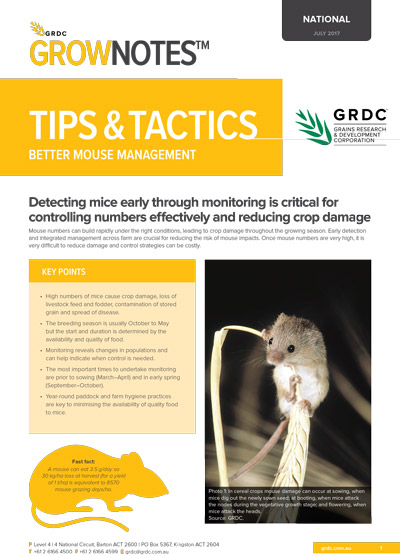Tips and Tactics: Better Mouse Management
Tips and Tactics: Better Mouse Management
Published: 19 Jun 2019
Detecting mice early through monitoring is critical for controlling numbers effectively and reducing crop damage
Mouse numbers can build rapidly under the right conditions, leading to crop damage throughout the growing season. Early detection and integrated management across farm are crucial for reducing the risk of mouse impacts. Once mouse numbers are very high, it is very difficult to reduce damage and control strategies can be costly.
Key points
- High numbers of mice cause crop damage, loss of livestock feed and fodder, contamination of stored grain and spread of disease.
- The breeding season is usually October to May but the start and duration is determined by the availability and quality of food.
- Monitoring reveals changes in populations and can help indicate when control is needed.
- The most important times to undertake monitoring are prior to sowing (March–April) and in early spring (September–October).
- Year-round paddock and farm hygiene practices are key to minimising the availability of quality food to mice
Frequently asked questions
How long will mice continue to cause damage?
How many applications of bait are required?
Are other animals at risk from mouse bait or baited mice?
Where can I get bait?
Download PDF
Region: National
GRDC Project Code: IAC00002, CSP1806-017RTX,

